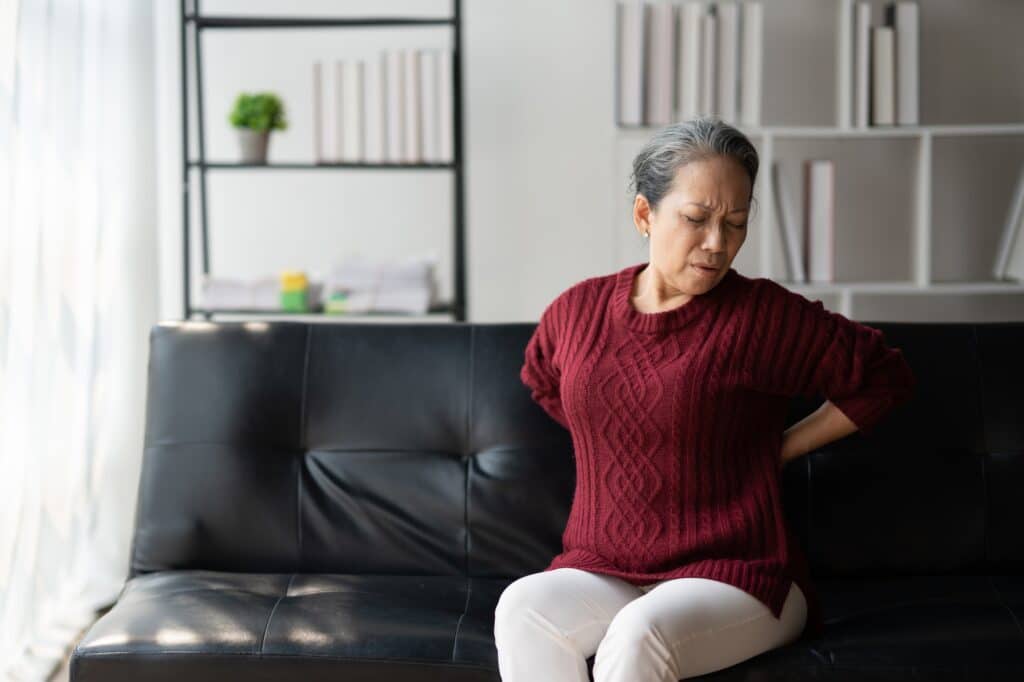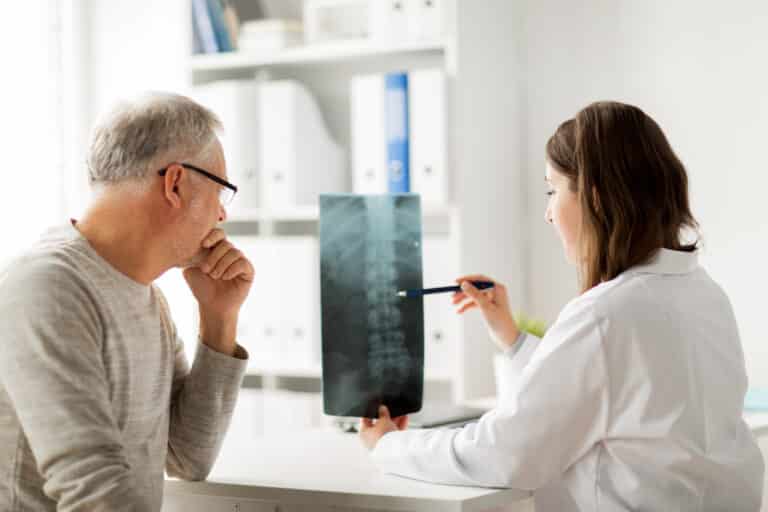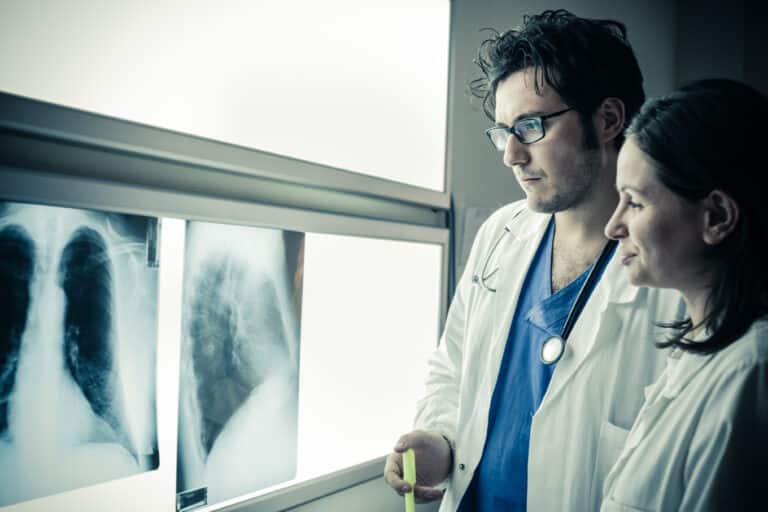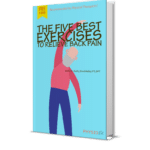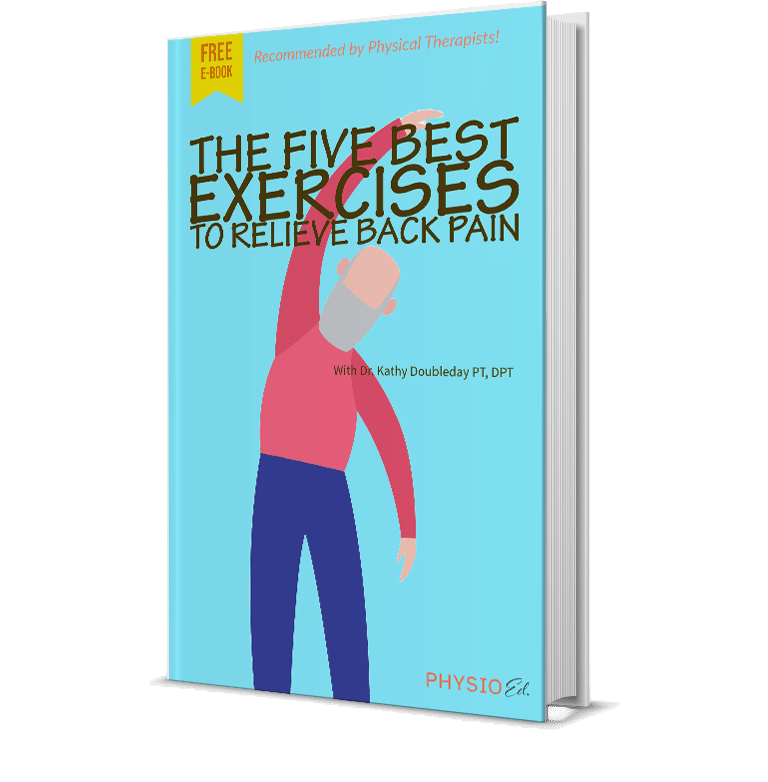Low back pain is a common problem that affects many older adults. While it may feel difficult to live with low back pain at times, several practical approaches to managing low back pain can help you stay active year after year.
To promote better health and well-being, it’s important to know the basics of low back pain, how it is evaluated and diagnosed, and what treatments are available today to help you get on top of it.
What is Low Back Pain?
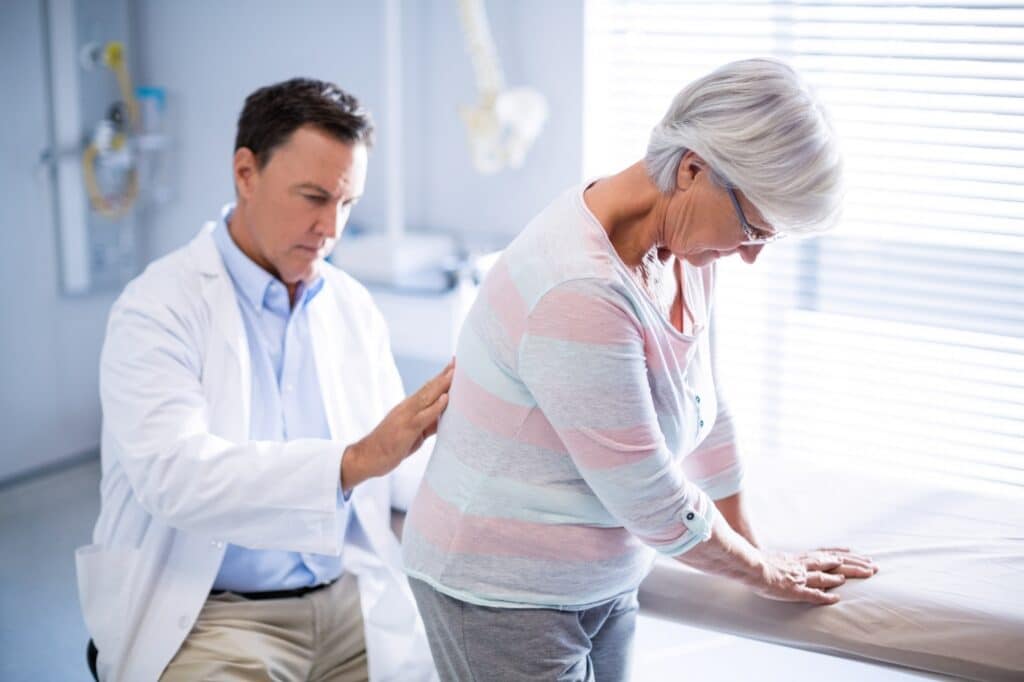
Low back pain—sometimes called LBP—is a general term to describe any symptoms of pain in your lumbar spine, which can be caused by various factors. It can represent problems with muscles, nerves, joints of the spine, or even problems with other organs.2, 3
But not all back pain occurs in the lower back.
Knowing the difference between lower back, upper back, and hip pain is essential. When talking about low back pain, we refer to the area between your lowest ribs and the crest of your pelvis. Let’s start with some anatomy.
Your lower back, also called your lumbar spine, is the lowest portion of your spine before reaching your sacrum — the large bone where your spine meets your hips. Your lower back comprises five bones called vertebrae that are important for providing structure and support during standing, walking, and most of your daily activities.1
In many cases, LBP isn’t caused by any one condition or injury, making it especially difficult to diagnose and treat for many older adults.
In contrast, when discussing upper back pain, we refer to the area between your lowest ribs and the base of your neck, also known as your thoracic spine.
Finally, hip pain refers to anything between the top of your pelvis and your upper thigh.
Now that we have a good handle on LBP, let’s discuss its causes.
Common Causes of Low Back Pain
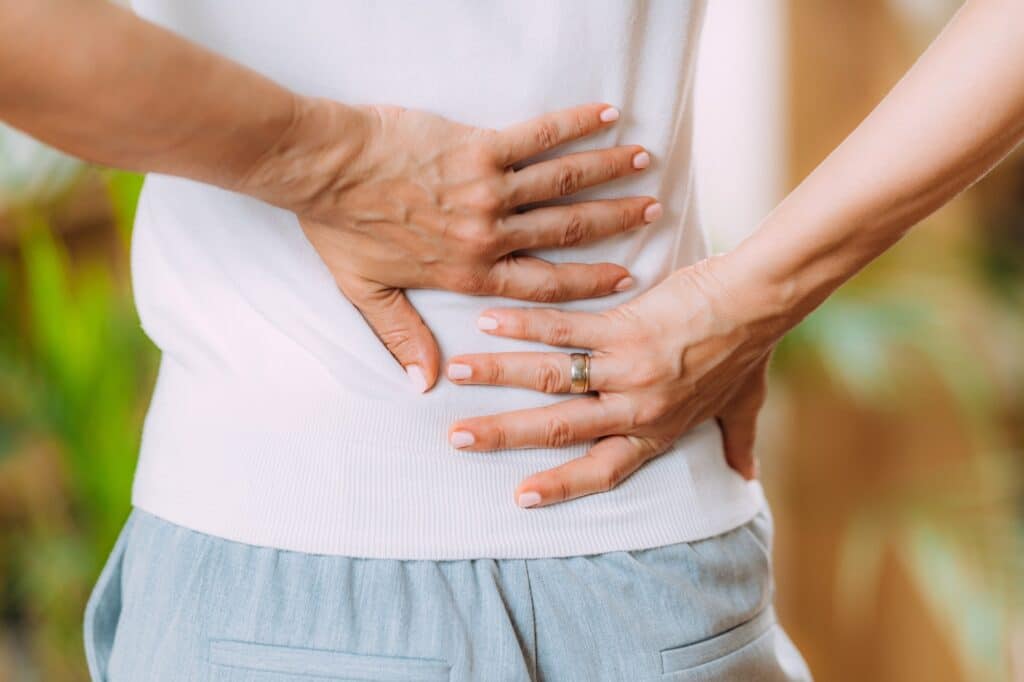
Just like how the symptoms of LBP can vary, so can the causes. We can often break up low back pain into specific and nonspecific categories.
Specific Low Back Pain
Specific low back pain (SLBP) describes low back pain likely caused by a particular injury or health condition, often with more clearly defined symptoms.4
Some common examples of conditions causing SLBP include spinal cord or intervertebral disc injuries, spinal stenosis, muscle strains, and joint instability.
Many specific low back pain types can be caused by sudden injuries such as a slip, fall, or heavy lifting. In these cases, there may be obvious signs of damage, such as swelling, difficulty moving, or a new onset of pain that wasn’t there before.
Related Posts
- Sitting Not Helping Back Pain
- Lower Back Pain
- What Is The Difference Between Soreness and Pain?
- Drug-Free Alternatives for Back Pain Relief: Why Medication May Not Be the Best Option
- When Back Pain Isn’t Just Back Pain
Nonspecific Low Back Pain
Nonspecific low back pain (NSLBP) describes low back pain occurring without a precise diagnosis or clearly defined symptoms.4
Nonspecific low back pain can mean stiffness, soreness, and painful movement, even when there isn’t a specific structure to blame. It can be very confusing for many older adults looking to diagnose their low back pain.
In many cases, NSLBP develops without an apparent injury or incident. However, you may begin noticing sudden back pain during a particular activity or on a specific day.
It’s important to know that injuries don’t always happen during accidents, so you should talk to your healthcare provider if you have concerns about the health of your lower back.
Certain factors can make specific or nonspecific LBP more likely. Some examples include obesity, low fitness level, weakened core musculature, and poor posture.
While none of these factors guarantee low back pain, they are associated with a higher chance of developing back pain. Working to manage these factors is associated with reduced low back pain throughout your life.
Types of Low Back Pain

Similar to other types of pain, low back pain can be a complex problem to live with. However, separating LBP into acute and chronic categories can be helpful.
The word acute describes temporary low back pain, usually resolving in less than twelve weeks. (5)
Acute low back pain can be mild to severe and may resolve quickly or last up to twelve weeks. Acute low back pain is typically easier to treat and often resolves on its own because many tissues in the body can heal in twelve weeks.
Chronic pain describes low back pain that lasts longer, usually persisting for over twelve weeks.5
Chronic LBP can also range from mild to severe pain. However, because chronic low back pain hasn’t resolved in the typical timeframe for most body tissues to heal naturally, it can be more complicated to manage than acute low back pain.
Many patients think that chronic back pain is untreatable, but in reality, it is still very treatable in many cases. It’s important to know that “chronic” is not a life sentence for low back pain but describes how long it has been a problem for you.
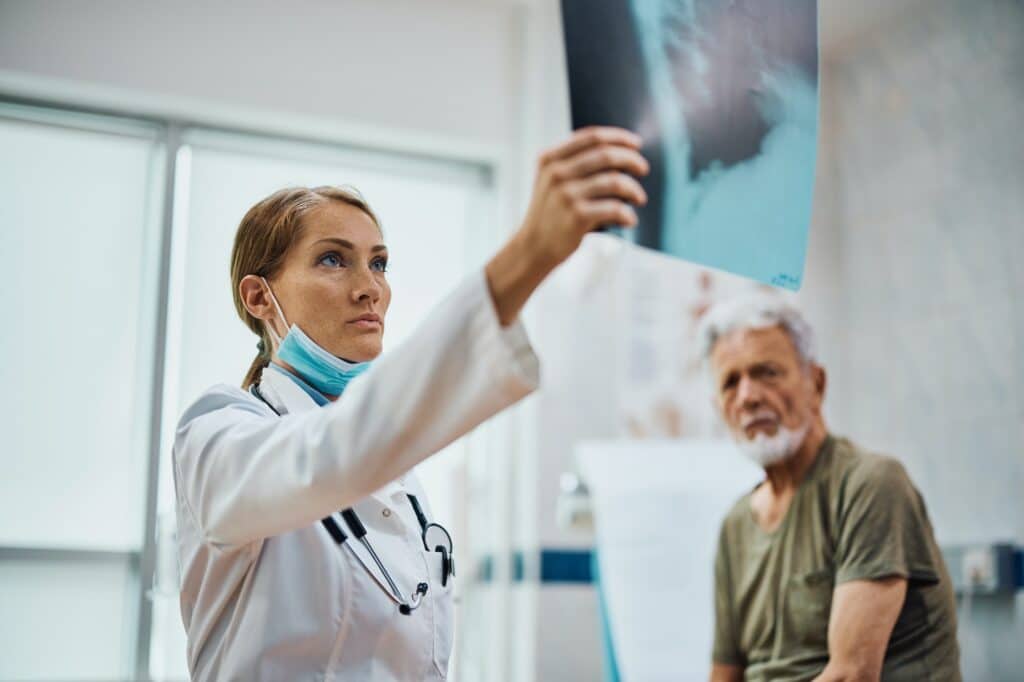
Diagnosing Low Back Pain
Physical examination, functional surveys, or medical imaging can diagnose LBP.
A physical examination can mean many things, starting with seeing a healthcare professional such as your primary care doctor or physical therapist for a basic assessment.
During your assessment, your doctor or therapist can observe your movement and evaluate other signs or symptoms of LBP. After meeting with you and assessing your status, a diagnosis may (or may not) be available for your pain.
Functional surveys, also called disability questionnaires, can be completed to answer questions about your lower back pain. These surveys can help determine how your symptoms or disability compare to other people and help establish a baseline for your treatment plan. In most cases, these surveys can be done multiple times to assess your progress.
Medical imaging is another popular route to diagnose LBP. This category includes X-ray, magnetic resonance imaging (MRI), and diagnostic ultrasound. Imaging is beneficial because it can help visualize structures in the body to determine if they are damaged, which can sometimes offer a faster diagnosis.
However, it’s essential to know that imaging results are not always directly related to low back pain. For example, it is common for tissue damage to show up on MRI results for people who do not have LBP, and vice versa.6
Treatments for Low Back Pain

The treatment approach to LBP has changed recently, benefiting older adults who want to beat back pain and stay active.
While bed rest and back braces were the norm many years ago, today’s approach focuses on exercise and healthy movement to minimize back pain.
For many older adults, physical therapy is a great way to help treat and manage LBP. Physical therapy can often address pain and disability without medications or surgery. In many cases, PT can be just as effective as either.7, 8
Many older adults can achieve improved mobility and overall quality of life through supervised exercise, functional movement training, and education about posture.
Even better, having a strong body with good mobility can help prevent future injuries.
Medication is another standard option for managing low back pain. Painkillers or anti-inflammatory medications are commonly prescribed to older adults with back pain.
Remember: while medication treats pain, it usually does not fix the underlying cause and should be combined with other treatments for optimal results.
In rare cases, surgery may be considered. Still, it should be reserved for situations where other treatments haven’t successfully managed pain and disability.
Key Takeaways
- Low back pain (LBP) affects the lumbar spine and can arise from various factors, including muscle, nerve, or joint issues.
- Differentiating between low back pain, upper back pain, and hip pain is crucial for proper diagnosis and treatment.
- Specific LBP has a clear cause, while nonspecific LBP doesn’t have an obvious origin.
- Acute LBP is temporary, typically lasting less than twelve weeks, whereas chronic pain persists longer.
- Physical examinations, functional surveys, and medical imaging are common diagnostic tools for LBP.
- Modern treatments emphasize exercise and movement, with physical therapy a beneficial option for many older adults.
- Medications relieve pain, but addressing the root cause is essential for comprehensive care.
- Surgery is reserved for cases where other treatments don’t provide adequate relief.
FAQs
Are certain activities or exercises more likely to trigger low back pain in older adults?
Certain high-impact activities or exercises that involve twisting, bending, or heavy lifting can pose risks for older adults. However, it’s essential to remember that every individual is different, and what might trigger pain in one person might not in another.
Is there a connection between low back pain and other health issues in older adults?
Low back pain can sometimes be related to other health issues, such as osteoporosis, arthritis, or even certain kidney problems. It’s crucial to consult a healthcare professional to determine if an underlying health concern contributes to the pain.
How important is core strength in preventing low back pain?
Core strength plays a pivotal role in supporting the lumbar spine. A strong core can help distribute stress, reduce strain on the back, and enhance balance, reducing the risk of injuries that might cause low back pain.
Are there alternative therapies that can be considered for low back pain?
Those with low back pain often explore alternative therapies like acupuncture, massage, and chiropractic care. While the effectiveness varies from person to person, some find significant relief from these methods.
How do lifestyle factors like diet and hydration impact low back pain?
A balanced diet can help maintain a healthy weight, reducing stress on the spine. Additionally, good hydration supports disc health. Consuming anti-inflammatory foods might also alleviate some symptoms associated with low back pain.
References
- Sassack B, Carrier JD. Anatomy, Back, Lumbar Spine. [Updated 2022 Aug 25]. In: StatPearls [Internet]. Treasure Island (FL): StatPearls Publishing; 2023 Jan-. https://www.ncbi.nlm.nih.gov/books/NBK557616/
- Chiodo AE, Bhat SN, Van Harrison R, et al. Low Back Pain [Internet]. Ann Arbor (MI): Michigan Medicine University of Michigan; 2020 Nov. https://www.ncbi.nlm.nih.gov/books/NBK572334/
- Pacheco-Carroza EA. Visceral pain, mechanisms, and implications in musculoskeletal clinical practice. Med Hypotheses. 2021;153:110624. doi:10.1016/j.mehy.2021.110624 https://pubmed.ncbi.nlm.nih.gov/34126503/
- Wong AYL, Karppinen J, Samartzis D. Low back pain in older adults: risk factors, management options and future directions. Scoliosis Spinal Disord. 2017;12:14. Published 2017 Apr 18. doi:10.1186/s13013-017-0121-3 https://www.ncbi.nlm.nih.gov/pmc/articles/PMC5395891/
- National Institute of Neurological Disorders and Stroke: Back Pain https://www.ninds.nih.gov/health-information/disorders/back-pain
- UpToDate: Patient education: Low back pain in adults (Beyond the Basics). https://www.uptodate.com/contents/low-back-pain-in-adults-beyond-the-basics
- Noorduyn JCA, van de Graaf VA, Willigenburg NW, et al. Effect of Physical Therapy vs Arthroscopic Partial Meniscectomy in People With Degenerative Meniscal Tears: Five-Year Follow-up of the ESCAPE Randomized Clinical Trial. JAMA Netw Open. 2022;5(7):e2220394. Published 2022 Jul 1. doi:10.1001/jamanetworkopen.2022.20394 https://pubmed.ncbi.nlm.nih.gov/35802374/

